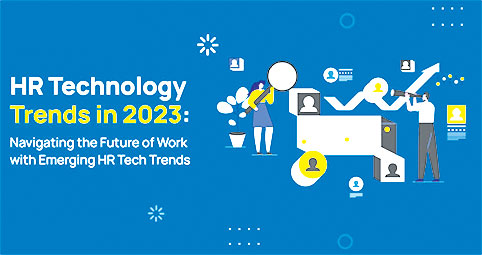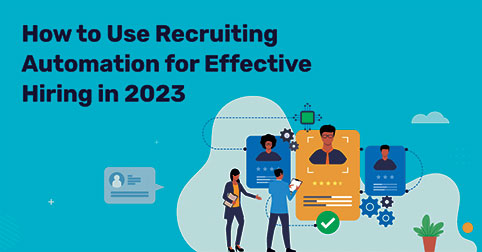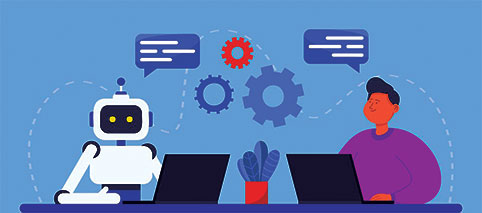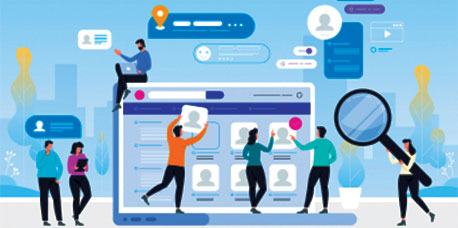
Introduction
In today’s rapidly evolving business landscape, staying competitive requires constant adaptation and innovation, and that applies to the realm of human resources as well. With the advent of advanced technologies, the HR sector has undergone a significant transformation in recent years. One of the most impactful changes has been the integration of automation into the hiring process. This shift is not just about streamlining tasks; it’s about revolutionizing the way HR teams around the world find, attract, and onboard top talent.
In this comprehensive guide, we will explore the various facets of automating the HR hiring process and how it can revolutionize global HR teams. From applicant tracking systems (ATS) to AI-powered chatbots and data analytics, we will delve into the tools and strategies that can take your HR processes to the next level.

Step1: The Need for Revolution
The Evolving Role of HR
Traditionally, HR departments were responsible for personnel management, compliance, and payroll processing. While these functions remain essential, the role of HR has expanded significantly. Today, HR is not just about managing employees; it’s about strategically driving the organization’s success through talent acquisition and development.
The Global Talent Pool
The rise of remote work and the increased globalization of businesses have opened up a vast talent pool. Organizations are no longer limited to hiring talent from their immediate geographic location. However, this also means facing more competition and dealing with a higher volume of applications from diverse backgrounds and locations.
The Challenges of Traditional Hiring
Traditional hiring processes can be time-consuming and labor-intensive. Sorting through hundreds or even thousands of resumes, conducting initial screenings, and coordinating interviews across different time zones can be overwhelming for HR teams. Additionally, manual processes are prone to human error, leading to missed opportunities and costly mistakes.
Step 2: The Power of Automation
Applicant Tracking Systems (ATS)
ATS software has become a cornerstone of modern HR operations. These systems help HR teams manage job postings, track applicant progress, and screen resumes efficiently. ATS can parse resumes, match candidates to job requirements, and even schedule interviews automatically. This not only saves time but also ensures a fair and consistent screening process.
AI-Powered Chatbots
AI-driven chatbots have revolutionized the way HR teams interact with candidates. Chatbots can handle routine inquiries, answer FAQs, and even conduct preliminary interviews. This 24/7 availability improves the candidate experience and frees up HR professionals to focus on higher-level tasks.
Predictive Analytics
Data is the lifeblood of modern HR. Predictive analytics can analyze historical data to identify trends and patterns in your hiring process. This data-driven approach can help HR teams make more informed decisions about recruitment strategies, such as where to source candidates, which assessment methods are most effective, and how to reduce turnover.

Step 3: Streamlining the Hiring Workflow
Job posting and promotion
Automation tools can help HR teams create compelling job postings and distribute them across multiple platforms with ease. Additionally, AI can analyze which job boards or social media channels yield the best results, optimizing your recruitment advertising budget.
Resume screening and candidate matching
AI-driven algorithms can assess resumes against job requirements, ranking candidates based on their qualifications. This significantly reduces the time spent on initial screenings, allowing HR professionals to focus on assessing the most suitable candidates.
Interview Scheduling
Coordinating interviews with candidates from different time zones can be a logistical nightmare. Automated scheduling tools can identify suitable time slots for both candidates and interviewers, reducing scheduling conflicts and speeding up the hiring process.
Onboarding and compliance
Once a candidate is hired, automation can assist with the onboarding process. It can generate offer letters, manage documentation, and ensure compliance with legal requirements, making the transition from candidate to employee seamless and error-free.

Step 4: Enhancing the Candidate Experience
Personalized Communication
Automation tools can send personalized emails and notifications to candidates at various stages of the hiring process. This not only keeps candidates informed but also demonstrates that your organization values their time and interest.
Feedback and surveys
Gathering feedback from candidates can provide valuable insights into your hiring process. Automated surveys and follow-up emails can help HR teams collect feedback, identify areas for improvement, and refine their recruitment strategies.
Speed and efficiency
Automated processes are faster and more efficient, reducing the time candidates spend waiting for responses or updates. This leads to a more positive candidate experience, enhancing your organization’s reputation as an employer of choice.
Step 5: Overcoming Challenges and Concerns
Data security and privacy
While automation offers numerous benefits, it also raises concerns about data security and privacy. HR teams must ensure that sensitive candidate information is protected and compliant with data protection regulations such as GDPR and CCPA.
Bias and fairness
AI algorithms used in hiring can inadvertently perpetuate biases present in historical data. HR teams must actively work to eliminate bias in automated processes by regularly auditing algorithms and ensuring diversity and inclusion in recruitment.
Employee Adaptation
Introducing automation into HR processes may face resistance from existing employees who fear job displacement. HR professionals should communicate the benefits of automation, such as workload reduction and increased focus on strategic tasks, to alleviate concerns.

Step 6: Case Studies
Company A: Boosting Efficiency
Company A, a global tech firm, implemented an ATS with AI-powered resume screening. This reduced their average time-to-hire by 30%, allowing them to secure top talent before competitors. The HR team now focuses on enhancing the onboarding experience and further improving employee retention.
Company B: Enhancing Candidate Experience
Company B, a multinational retailer, integrated AI chatbots into their recruitment process. Candidates receive instant responses to inquiries, resulting in a 40% reduction in candidate drop-off rates during the application process. This has significantly improved the quality of their talent pipeline.
Company C: Data-Driven Decision Making
Company C, a financial institution, leveraged predictive analytics to identify sources of top-performing employees. By reallocating their recruitment budget to focus on these sources, they reduced recruitment costs by 20% while increasing the quality of new hires.
Step 7: Preparing for the Future
Continuous learning and adaptation
The HR landscape will continue to evolve, and staying ahead requires a commitment to continuous learning and adaptation. HR professionals should invest in training and development to keep up with emerging technologies and best practices.
Collaboration and communication
Successful automation requires collaboration between HR, IT, and data analytics teams. Open and effective communication is essential to ensuring that automation aligns with HR goals and values.
Ethical Considerations
As automation becomes more prevalent in HR, ethical considerations become paramount. HR professionals should actively address issues related to bias, fairness, and transparency to ensure that automation serves the best interests of both the organization and its candidates.

Conclusion
Automation technology is not just a tool for HR teams; it’s a catalyst for transformation. By harnessing the power of automation, global HR teams can revolutionize their hiring processes, saving time, improving efficiency, and enhancing the candidate experience. However, successful implementation requires careful planning, ongoing evaluation, and a commitment to ethical and unbiased practices.
The future of HR is automated, but it’s also human. Automation frees HR professionals from repetitive tasks, allowing them to focus on what truly matters: finding and developing the best talent to drive organizational success in an ever-changing world. Embrace automation and revolutionize your global HR team’s hiring process for a brighter future of talent acquisition.





